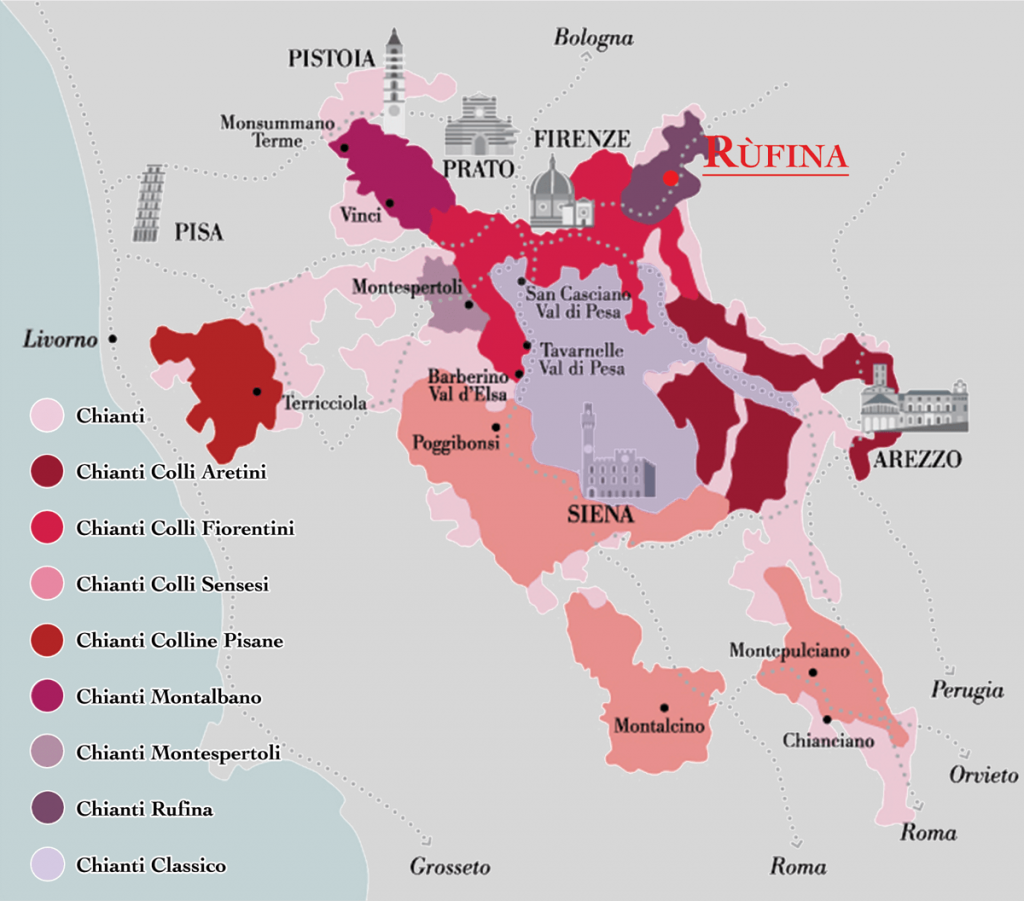What is a Chianti Wine?
There seems to be some confusion regarding Chianti wines, so here’s a beginners guide that will make things easier to understand. You may be familiar with the historic bottle wrapped in a straw basket known as the fiasco. It was present in restaurants, and almost every film depicting Italy. It was also synonymous with a cheap low quality wine, and to some extent this was true. However the Chianti of today has little to do with the past, and the fiasco bottle was phased out in the late sixties by most producers.
Present day Chiantis regularly obtain 90+ points from the press and sommeliers, but many still consider it inferior to wines like Barolo and Brunello. So that’s just just great for savvy drinkers. You can pick up a delicious bottle of Chianti at significantly inferior prices. Take a look at my premium tour, which takes us to the Chianti region and compare it to the brunello tour. You’ll see how all things Chianti have lower prices. One of the reasons is that most people have accommodation in Florence and it’s a two hour drive to the Valdorcia & Brunello wine country. The rest is due to higher prices for wine tastings, which I pay for directly.

The Chianti Appellation Zones
The Chianti grape
Nope there isn’t a grape called Chianti. Chianti is in fact a blend, and the principle grape is Sangiovese. The minimum requirement of Sangiovese is 75% to 80% depending on which appellation area the wine is from. The remaining percentage can be made up of a long list of other varietals, the most common being cabernet and merlot. In recent years and incresing number of producers are producing Chianti with 100% Sangiovese.
The Characteristics of Chianti Wines.
Chianti and Sangiovese wines are characterized mouthwatering acidity, a transparent ruby hue and flavors of red cherry and violets. Spice and earth are also present when barrel aged. All sugars are turned to alcohol and tannins are moderately present. The body is light to medium, and barrel ageing (when done) is light so as not overpower the fruit.
Some Chianti’s can be enjoyed early, even after a year from harvest. Others will benefit from ageing, and will be at their best after at least four years. How can you tell the difference? Just look at the price! You can pick up a young wine for less than €10,00 while you could pay around €35,00 for a bottle of “Grand Selection” (see below).
Which one is best? That’s hard to answer, there are of course differences, but ultimately it’s all about your personal tastes. All I can say is try them.
The Appellations
Chianti can only be made in a defined area of central Tuscany, and nowhere else. There is one historic area which was defined in 1760, plus seven sub zones which were added in the 1930’s and one last one in 1996.
Chianti Classico
The wine form the historic production zone is called Chianti Classico. They’re easily recognizable because on the neck of the bottle you’ll find the logo of a black rooster. Chianti Classico is considered the top of all wines produced in the Chianti region. Not only because of the characteristics of land and climate, but also due to wine making practices and longer ageing.
Chianti (The Sub Zones)
The wines from the subzones just go under the name of Chianti, and they are:
Colli Aretini, Colli Fiorentini, Colline Pisane, Colli Senesi, Montalbano, Rufina, Montespertoli
The DOCG (controlled and guaranteed denomination of origin)
The D.O.C.G are the appellation rules to which all Chianti wines must be made. You will see this acronym on the label. In fact most of Italy’s traditional wines come under a D.O.C.G category. They define how and where each wine can be made, and there are currently 70 such appellations throughout the land.
The rules for Chianti Classico and Chianti are slightly different. I’ll keep it simple and state that Chianti wines must contain between 70% & 75% of the Sangiovese grape. They and have shorter ageing periods and the base wine can be put on sale six months after harvest.
Chianti Classico wines must be minimum 80% Sangiovese and are put on sale at later dates (see quality tiers below).
There are other appellation definitions, such as D.O.C. and I.G.T. but these are lower levels of the quality pyramid. Though Chianti doesn’t come under these labels, some of Italy’s most prestigious and expensive wines such as Super Tuscans are I.G.T’s. Confusing isn’t it? You can read more here.
Chianti Classico Quality Tiers
As my Tuscany wine tours take us to the Chianti Classicio region, here are the three quality tiers of the apellation.
Annata or annual wine, which ages for 12 months before release.
Riserva which must age 24 months and is made from selected grapes. Though not a legal requirement it will be aged for varying periods in barrels. Each winery may choose how to go about the process, but generally it will be French oak barrels of 220 litres. The period may vary greatly so from six months to a couple of years. As I stated earlier the aim is not to overpower the fruit.
Gran Selezione has the longest aging requirement at 30 months. It’s made from selected estate grown grapes and usually aged in French oak barrels of 220 litres. Again the period is variable, and the aim is to enhance not overpower the fruit forward characteristics of Chianti wines.
